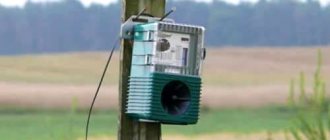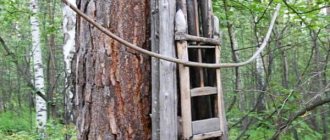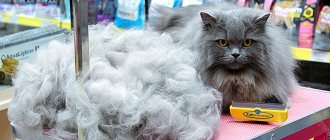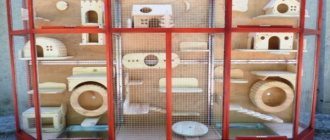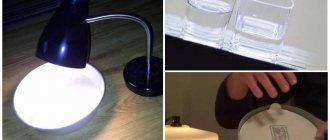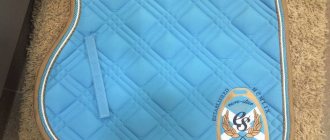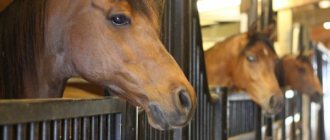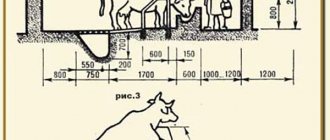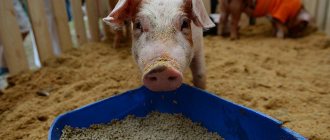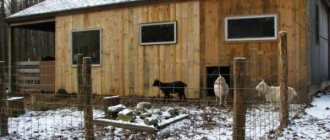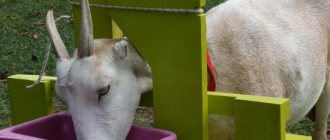Most often, livestock farmers face problems with limbs and obstetric and gynecological diseases. These are the problems most often addressed to veterinarians. It is problems with the limbs that lead to a serious decrease in the productivity of the herd. It also negatively affects reproduction.
In order to minimize such risks, it is necessary to take a number of serious preventive measures. To trim cows' hooves, it is necessary to use high-quality modern equipment. This will avoid many problems. One of the best options on the market is products from the famous Italian manufacturer Agricow. Buying a hoof machine is beneficial for farmers. because the price is more than affordable.
Hoof processing machine up to 600kg
Purpose of the machines
The veterinary machine is intended for livestock, to temporarily render it immobile for the purpose of hoof correction and veterinary procedures. Neglected hooves in livestock can be one of the causes of limb diseases, which can limit mobility and affect the amount of feed eaten. All this can cause a decrease in milk productivity by even 20%.
Hoof correction is done depending on the method of cattle breeding:
- in barns with livestock on a leash - 2 times a year;
- in barns with livestock without a leash, corrections are done less frequently, because in such conditions the hooves wear out faster.
In young cattle, hooves should be trimmed before the end of the first year of life. For cows staying on pasture, hoof correction is done in the spring 1-2 months before going out to pasture and correction in the autumn before being kept in the barn. The veterinary machine makes it easy, safe and stress-free for animals to carry out veterinary procedures on even the most aggressive units.
Description of structure and operation
Machine structure
The device consists of steel pipes (galvanized) connected to each other by welded seams. It has a rectangular shape, at the corners there are vertical posts to which horizontal supporting pipes are welded on the 2 long sides. The pen has a front and rear entrance through which cattle enter and exit. The floor of the pen is made of openwork steel lattice, it is anti-slip and stable for livestock. To subdue without stress, we lift the cattle using wide belts using a worm gear. We block the animal's head with a bolt in the front doors of the machine, and the animal's rear is blocked by a chain. In addition, at the rear of the animal there is a hinged frame to which, using narrow straps, one hind leg is blocked for correction. The machine at the bottom of the front part of the supporting frame has two wheels, thanks to which you can simply move the device within the farm.
Machine action
The cow is introduced into the pen and the animal's head is blocked using a gate in the front exit. To prevent the cow from moving, it is secured with a chain from behind. The blocked cow is lifted on straps (belts), then one of the forelimbs is blocked, lifted and secured to the base. In this position, the rear hooves are corrected. After hoof correction or other veterinary procedures, the animal is lowered onto the floor of the pen, the support straps are unfastened and the head locks of the front doors are opened. The cow can leave the pen.
Features of the machines
- Anti-slip floor made of Mostostal type gratings.
- The lock in the front doors of the pen makes it possible to successfully block the animal's head.
- The posterior chain of support for the animal's hindquarters.
- Wide straps make it possible to support the animal or completely lift it. Raising the animal on the belts occurs using a worm gear.
- Narrow belts with a crank and automatic braking provide the ability to raise and lock the legs for correction.
- Thanks to the use of wheels with a diameter of 350 mm in the front part of the machine, it is possible to move the device within the farm.
Optionally, the machine can be equipped with a tractor or automobile hitch. Machines with a car hitch are not allowed to move on public roads and to move them, you must use an appropriate trailer - a livestock trailer.
What types of machines are there for fixing cattle?
Cattle machines from different manufacturers differ in design features. Regardless of the manufacturing technology used, all splits function according to the same principle and are placed inside the barn. Hoof trimming machines are:
- collapsible;
- easel;
- mechanical;
- with electric drive for front and rear legs;
- hydraulic;
- wheeled.
The last option is convenient in terms of movement. The machine is convenient to roll due to the presence of powerful wheels.
Almost all factory-made machines are a rectangular structure made of metal frames. Approximate dimensions:
- length – 2.5 m;
- width – 1.1 m;
- height – 2 m.
A device for processing hooves is made of metal. The protective coating is a galvanized layer or paint. The machine does not have sharp corners or protrusions that could injure the animal during the procedure. The locking mechanism is chains with leather straps.
They tell you more about the machines in the video
Prevention of limb diseases
The health of animals on a farm depends on many factors: the living conditions, the quality of feeding, and the condition of the farm buildings. Without feeding the cow properly and without providing her with comfortable conditions, it is pointless to expect an increase in productivity and good health of the animal.
However, in the case of diseases of the limbs, it is important to follow certain preventive measures.
First of all, this is timely trimming of hooves, which should be carried out at least once a quarter. Cows with properly trimmed hoof horns are significantly less susceptible to lameness. In the case of an acute problem with the limbs of cattle, the affected areas of the hooves are treated in the machine at least twice during the course of treatment (5–10 days).
Regular hoof baths are a good therapeutic and preventive remedy. And when used together with high-quality and regular hoof trimming, lameness problems can be reduced to a minimum. The best special products for hoof baths today are considered to be quaternary ammonium compounds and preparations based on glutaraldehyde. These are strong disinfectants that are easy to dilute and effective at low temperatures.
There are other recommendations that will help maintain healthy limbs in cattle:
- Create conditions for proper rest for animals: on a dry straw bedding, in a dry stall. The air temperature in winter should not fall below 5 °C;
- Manure removal - 2-3 times a day;
- Regular exercise. Cow walks should be conducted in any weather except rain and snow. Walking yards should be regularly cleared of manure, and potholes in the floor should be promptly repaired;
- Once a quarter it is necessary to disinfect rest areas and all passages;
- Include sulfur-containing vitamins in the diet to strengthen the hoof horn;
- The strength of the hooves is an inherited trait. Therefore, when selecting animals for broodstock, you should choose animals with hard and less moisture-intensive horns.
What promotes hoof growth?
The top layer of the hooves grows quickly; in a month its thickness can increase by 6-8 mm. If a cow grazes, then such growths can wear off spontaneously, but animals kept in stalls suffer greatly from this. Growths on cattle hooves quickly lead to lameness of animals, since the hooves become deformed due to growths. Pregnant cows are especially susceptible to this - the stratum corneum grows fastest during this period.
Rapid growth of the top layer depends on many factors, the main one of which may be poor flooring in the stalls. This can also be caused by improper nutrition of cows - if the food contains a lot of carbohydrates, but is sorely lacking in fiber. Another factor is the quality of bedding in the stalls. If it is dry and plentiful, then the likelihood of cows having hoof problems is minimal.
The process of trimming hooves on a machine
The outer stratum corneum on the hoof is designed to protect the inside of the hoof. It constantly grows, forming solid nodules and growths. If it is not trimmed periodically, the animal will experience discomfort when walking and begin to limp.
Hoof trimming rules
For the first time, such a procedure should be carried out under the guidance of an experienced specialist; it is also important to know the frequency of the procedure. Basic rules for pruning:
- When cows are kept in stalls, the procedure is carried out up to three times a year, and when cows are kept free-stall - twice a year.
- The day before the planned trimming, the cow is kept on a damp bedding to soften the horny formations, which will facilitate the process.
- It is necessary to prepare a number of tools and be sure to disinfect them before work.
- You need to make sure that the animal is comfortable and that the straps hold it securely.
- If the animal is too excited, you can sedate it.
- Livestock should be handled calmly, without shouting, so as not to provoke stress.
- The hooves are first cleaned of dirt, examined for inflammation, and, if necessary, treated with an antiseptic.
- The work is carried out slowly so as not to damage the inner layer.
- All sharp edges are carefully filed and rounded.
How to herd a cow into a pen
Usually the pen is installed at the exit from the barn, so the cow enters the structure itself. The back door is closed behind it, all the necessary belts are put on, and the head is fixed in a special recess.
At home, the machine is stationary; it is built where the territory of the farm allows. The cow is led out of the barn on a leash, with a rope loop around its neck. A quiet beast will follow its owner on its own, you don’t need to shout at it, talk kindly.
To prevent the animal from worrying inside the structure, you can place an armful of hay in front of it.
Execution Sequence
Prepare your instruments and disinfect them. Further actions are performed in the following sequence:
- The animal is driven into the pen and immobilized using belts.
- An initial examination will determine the position of the hoof and the relationship between the toes and heel. They take measurements.
- Preliminary cleaning of dirt is carried out.
- They start with the forelimbs, gradually removing keratinization from the inner layer.
- The old gray layer is removed with a knife until a white color appears. You need to make sure that the surface remains hard.
- At a distance of 3 mm from the edge of the sole, forceps are installed: they will help to evenly smooth the surface of the walls.
- The surface is leveled using a cutter, achieving a line perpendicular to the position of the limb.
- Protruding pieces of fur are removed using scissors.
- Round off any sharp edges with a file.
- In this way, all soles are treated.
- If the procedure is carried out correctly, the sole will lie flat on the surface of the tester or the blade of the knife.
Treatment of hooves after trimming
The pruning procedure at the end of the work requires disinfection: a fresh surface is open to various types of infections.
Subtleties of the disinfection procedure:
- Thoroughly clean the surfaces from any remaining dust from the dead layer, and inspect for cracks or wounds.
- A solution of copper sulfate or formaldehyde is used as an antiseptic.
- After treatment, hooves should be rinsed with clean running water under pressure.
- If there are several animals on the farm, the liquid in the disinfection bath must be changed for each one separately. This is done to avoid infection.
- Ideally, the depth of the bath container should be about 15 cm in order to wet not only the hooves, but also part of the limb.
In a small household, with a little effort you can make the cleaning process easier. A machine made by yourself will allow you to save money on its purchase; you will not have to ask your neighbors for help.
Remember that timely cleaning of the limbs is one of the most important conditions for the normal functioning of a horned pet, the key to its high productivity.
To obtain cattle carcasses, animals must be transported to specially equipped enterprises (slaughterhouses or meat processing plants). In some regions, independent slaughter of livestock on private farms is allowed. This process requires certain knowledge and preparation, as it must be carried out quickly and, if possible, painlessly for the animal.
You will find useful recommendations for preparing bulls and cows for slaughter in this article. It also describes the most common slaughter technologies, as well as methods for cutting up carcasses and processing hides.
What to look for when buying a machine
- Handle lift. An incorrectly made machine handle will add interesting expressions to your vocabulary, because at the slightest unevenness it will rest against the ground, preventing the machine from moving. In particularly advanced cases, the handle may spontaneously jump off the stops, despite the fact that the process of returning it to its place is quite labor-intensive. For comfort, it is good when the surface of the handle is covered with rubber or silicone: this is not only convenient, but also provides protection to the orthopedic doctor.
- Wheels. They can be plastic or rubber. Plastic wheels are less convenient to use because they wear out quickly and roll worse. The diameter of the wheels is also important: it is unlikely that you will constantly move the machine on perfectly flat and smooth surfaces. The diameter must ensure that it can overcome minimal floor unevenness and low thresholds.
- Metal coating. Manufacturers offer customers both hot-dip galvanizing and paint coating. Hot galvanized is better. This is one of the most reliable methods of coating machine tools, which allows you to provide a guarantee against corrosion for years. But there are cases when they pass off ordinary paint as hot-dip galvanizing: it will begin to wear off and fall off, and the machine will rust within six months. If you yourself cannot distinguish galvanizing from painting, then find a knowledgeable person who could be present with you when choosing a machine.
- Split height. In some machines, the height of the gate in the split is much lower than the average height of a person. This does not matter if the orthopedic doctor is short. But for a specialist taller than 170 cm, bending over every time when entering and exiting the machine is tiring. And there is a risk of injury even before the start of the work process.
- Partitions in the machine. If there are horizontal partitions on the side wall of the machine, then the distance between them should be minimal. The fact is that the animal, when in limbo, tries to climb the horizontal slats, like a ladder. The cow's leg may get stuck between the slats, making it difficult to get out. The safest and most convenient option is vertical slats. They protect both the orthopedist and the animal from injury. An important role is played by the metal plate-fender, additionally welded to the front bar, which reduces the risk of injury that the animal can cause to the orthopedic surgeon with its hind limbs.
- Doors. Front flaps can be mechanical or automatic. Naturally, automation facilitates the process of corralling and securing the animal. Fully mechanical doors are more difficult to use because... The orthopedist must drive the animal and have time to close them. Another nuance of the front flaps is the presence of all sorts of cracks, gaps and other things where a cow can stick a limb and get injured. The rear flap in many machines is not adjustable. The orthopedist is forced to work with the hoof suspended, bent over. This, of course, is inconvenient and dangerous for the specialist’s health. The adjustable rear flap can be secured in several positions depending on the size of the animal.
- Hydraulics. A well-designed machine has guides for the hind legs to avoid injury when lifting them hydraulically. The animal lifting mechanism can be designed in such a way that the chain sometimes winds incorrectly and there is a risk of damaging the bearing.
- Hind hoof hook. Many experts on farms emphasize that it would be a good idea to equip the hook with a rubber coating and thereby reduce the injury to the animal.
- Adjustments. An important role when purchasing equipment is played by the ability to adjust the machine in height. The undisputed favorites here, of course, will be hydraulic machines, where the frame lift height reaches up to 50cm. This only means that the orthopedist works with hydraulics at a level that is convenient for him, without creating unnecessary stress on the spine. But any other machine must have height adjustment.
- Comfort of the orthopedist. The most important thing here is to reduce the number of unproductive manipulations. To do this, the machines must be equipped with all kinds of tool holders, panels with holders for medicines, sockets and control panels on both sides. On the front bar there is a mount with teat rubber, which is filled with a disinfectant to disinfect the hoof trimming knife. For greater convenience, sockets are installed on both sides. For safety, it is better that they are permanently attached to the top of the machine. For greater convenience, the electrical distribution panel is placed at the top of the machine. This reduces injuries and ensures longer equipment life. Many manufacturers place the electrical distribution panel on the side wall at the level of the animal's head, which leads to damage to it. A cow, passing by the machine, if it is stationary in the barn, strives to lick, smell, and taste it. The control panels are installed on both sides, which also creates convenience for the doctor.
- Fixation.
hoof outThe front limb fixation system can be of several types: the “Shackles” system, hydraulic or electric drive, hand winches, or simply wooden blocks. In Belarus, the “Shackles” system is in greatest demand. When buying a machine with this system, you need to take into account certain design nuances. Fixing target in the AgriPO machine: the limb is held motionless, which facilitates the orthopedist’s task when working with a cutter.
hoof inside - Now let's move on to the chest and abdominal straps. In AgriPO, only the Profi machines and hydraulic machines have a belly belt. All other models come standard with a chest strap only. Why is it important for us to know the number of belts? The fact is that if two specialists are working on trimming hooves, then a chest belt is quite enough. If there is only one orthopedist, it is advisable that an abdominal belt be installed, then the specialist will be able to work without additional help.
- Machine floor. The most convenient are a metal corrugated floor or a floor made of expanded metal. The animal does not slip when entering the pen and, thanks to this, behaves calmly. Smooth metal is slippery and dangerous. Many experts complain that when reaching the front gate of the pen, animals often fall on their front limbs and are injured. Therefore, it is good if the floor in the front part of the machine is covered with a rubber mat.
- Lighting engineering. All professional machines must be equipped with lights, which will allow you to work safely in darkened rooms.
How the schism works
In order to examine the animal without interference, vaccinate it, or carry out any other necessary procedure, it must be separated from the herd and secured. The fixed position makes the work of a veterinarian or livestock specialist easier and prevents the cattle from harming themselves or people.
A split is installed in the passage along which the cows move, and one individual is separated from the herd. The simplest option is a frame for fixing. The animal passes into the open frame, after which the lever is pressed, and the doors close, and the neck clamp securely and securely fixes the neck. It is better if it is adjustable in width. An additional lever can be added on top to completely immobilize the head.
The legs are secured with straps or clamps. A special gate at the back blocks the passage of other cows. After this, you can begin treatment, tagging or other procedures. A more complex design is a box.
We use metal
To make a metal split with your own hands, weld several profile pipes 60x40x3 or 40x40x3 mm (you can use round ones with a diameter of 8-10 cm) so that you get a rectangular pen measuring 1x2 m.
Strengthen it by adding a few more pipes along the long side to give the structure stability and rigidity. Provide free access from the sides: weld opening panels or grilles.
Equip the short sides of the box with gates. The rear one can be hinged or sliding, but must have a strong lock.
The front gate must have a recess for a neck clamp. Weld strap lugs to secure additional straps that can be passed under the cow's belly. This will help lift it if necessary and keep it suspended. Clean and paint the box.
Was the article useful? Share it with your friends.
How to fell cows
As mentioned above, to trim the hind hooves, the cow must be felled. There are many ways to do this, but the following is considered the most convenient (authentic certificate 540633).
Preparation
To knock down a cow, you will need a bedding on which it will have to fall, and a rope. It should be strong, but not rigid, about 6 m. Its first end is tied on the front leg, above the hoof, in the area of the fetlock joint, on the side on which the animal is planned to be felled. The rope is then wrapped around the body, just below the shoulder blades. The free end is attached to the hind leg, on the same side, to the fetlock joint.
A person should stand on the other side so that the cow does not fall on him. The free edge of the rope on the back leg is slightly pulled in the area that wraps around the body. Immediately they lightly hit the toe of their foot below/above the fetlock joint of the limb that is tied with a rope.
At this point the cow should automatically lift that leg. This limb is quickly moved towards the chest.
Further actions
The part of the rope on the back is held especially tightly, plus the end, loosely wrapped around the hind leg, is pulled so that the rope passes under the body of the cattle. This will cause the slingshot to lose its balance, which will cause it to lie on its side (from the side of the first end of the rope), and its back leg will automatically extend. Now, at the level of the fetlock joint of the hind limb, the free edge of the rope is attached, using the loop method.
As a result, it will be possible to work with the back legs and one front leg. Before the fall, the cow is tied by the neck to some kind of fastening (support, etc.).
Take care of your animals and be sure to look after them.
Who should you trust to do the pruning?
This work should only be entrusted to a well-trained specialist, since without the appropriate knowledge, animals can easily be injured, which will ultimately lead to a decrease in their milk yield.
So, if you do not have the necessary experience, you should call a team of professionals. They will arrive with all the necessary equipment, so there is no need to purchase any. In a day, the team can trim the hooves of 80 cows and perform a number of auxiliary work, including treating limbs when diagnosing diseases.
You can invite special workers once a season.
In the video below you can see the process of hoof treatment by a professional:
How to put a cow in a pen and trim its hooves
Since the restraining machine is installed at the exit of the barn, there is no need to specifically drive cows into it. Before going outside, the cow will enter the pen on its own; you only need to timely fix the animal’s head in the recess for the neck clamp. Once the neck is secured, the back gate is closed to prevent other cows from getting into the structure and interfering with the procedure. Usually cows behave calmly in such pens, so without much effort you will fix the necessary hoof, which will be trimmed. The front hooves are trimmed first, then the back hooves.
For the procedure, use a special knife for trimming hooves, a cutter or a milling cutter, carefully cutting off the old hoof horn from the sole and crumb.
This part is characterized by a gray color, it is brittle and fragile, and cannot be confused with the “living” part of the hoof. The young hoof horn is light and elastic, so the old part is cut off until a white line appears.
The procedure must be performed as carefully as possible so as not to touch the young area. In this case, it is better to stop earlier, without finishing the hoof a little, rather than injure it. If it is still not possible to avoid injury, the wound is immediately treated with iodine.
Each subsequent hoof is treated in the same way, having previously fixed it. After all the hooves have been trimmed, the cow's last leg is initially released from the clamp, the front gate is opened, freeing the animal's head from the neck clamp, and the cow calmly goes outside. After this, the back gate opens and the next animal enters the split to carry out the procedure.
In order not to spend money on a ready-made machine for restraining animals, you need to study our instructions, which will tell you how to make a split for cattle with your own hands. This is the name given to a special frame or box for limiting the mobility of a cow. It is indispensable when examining, treating or processing livestock. Ready-made machines are expensive, they need to be ordered, and any modification to suit the customer’s needs only increases the cost. It’s easier, cheaper and more convenient to make such a device yourself.
Do-it-yourself anti-kick for cows
Treatment of grapes from diseases and pests - processing time
This device is designed to limit the cow's mobility during milking. There are one-sided and two-sided anti-kick options.
The first of them is considered classic. This anti-kicking for cows looks like this.
Antibryk
The lower part is hooked onto the fold that runs forward from the cow's hind leg. The upper part extends beyond the spine. The button that looks out of one of the holes is located on a spring bar, which pushes it out into the holes, fixing the overall length of the device. If you press the button, you can change the length of the anti-kick. If it is too loose for the animal, it will not be effective. You need to adjust the length to make it fit tight.
To make an anti-kick for cows with your own hands, you need to make the following parts, according to the diagram.
Anti-kick circuit
You will need two curved pieces of pipe A with one hole each, which will need to be inserted into the symmetrical curved pipe B, which has a larger diameter. First you will need to insert an angular spring D into them, so that the button fits into the hole. When inserting pipes, the buttons must be pressed using the palm of your hand. Rubber caps must be placed on the outer ends of the pipes to protect the cow from being scratched. Here's how to make your own anti-kicker for cows using metal parts.
Important! The size of the device must be such that it is suitable for the cows on which it is intended to be used
How to properly trim a cow's hooves: step-by-step instructions
As part of stall housing, this procedure is carried out at least 3 times a year. For pasture or boxing - 2 times, in spring and autumn during the period of pasture to the meadow. Unscheduled measures are carried out only when injuries occur or the hoof horn is broken.
Step 1: Assessing Hoof Condition
Before proceeding with the removal of the upper stratum corneum, it is important to evaluate the appearance of the hooves. For example, if there is curvature of the limbs, pruning according to the prescribed technology will contribute to the formation of lameness. Since the manipulation performed will not be consistent with the incorrect anatomical structure of the hoof
In the presence of inflammatory processes or extensive injuries, it is advisable to wait for complete healing and then cut off
Since the manipulation performed will not be consistent with the incorrect anatomical structure of the hoof. In the presence of inflammatory processes or extensive injuries, it is advisable to wait for complete healing and then cut off.
Hoof knife
Step 2. Preparing tools
To carry out the procedure you will need the following tools:
- professional pruning knives;
- cutter;
- forceps;
- scissors.
In addition, a machine is needed. To secure calm individuals, one rope is enough. If cracks or wounds appear during work, you will need a disinfectant.
Forceps
Prices for end cutters
End cutters
Tweezers are considered an effective tool for quickly removing chips and stratum corneum. They are made of first-class steel and are a simple device with long handles. Soft tips are provided for gripping. This measure allows you to minimize the labor intensity of the process when removing particularly strong build-ups. In most cases, this device comes with replacement cutting knives.
Machine
To carry out this manipulation, it is advisable to purchase or make a machine yourself. It firmly fixes the cow's body. Leather belts do not put undue pressure on internal organs. With its help, pruning can be done by one person. One positive aspect is the reduction in stress levels during the procedure. It has been proven that stressful situations have a negative impact on the quality of milk.
At the final stage of trimming, a rasp is used
Step 3. Preparing the animal
The cow is fixed either by the horns in a standing position, preferably in a pen. In this case, the limb being treated is tied to a stable object.
Many farmers use the old method of placing cows on litter.
Most often, the cow is placed on bedding before trimming.
Sequencing:
- Prepare a strong, but not rigid rope about 6 m long.
- Tie the cow by the neck to a support or to a tree.
- From the side from which you plan to fall the animal, tie one end to the front leg in the area of the fetlock joint.
- Tie a rope around the body under the shoulder blades, without squeezing the stomach.
- Tie the free end on the hind leg.
- Pull the rope and lightly kick above the fetlock joint of the bandaged limb.
- When the cow automatically raises its leg, press it to your chest.
- Pull the end loosely entwined on the hind limb so that the rope is located under the animal’s body. As a result, it will lose stability and lie on its side. The back leg will instinctively extend.
- Secure the free end of the rope to the second hind limb.
As a result, three limbs will be bandaged.
Transferring the cow to wet bedding makes the trimming process much easier.
Step 4. Pruning technique
Sequencing:
- Transfer the cow to wet bedding 1 day before the scheduled manipulation. This measure helps soften the upper stratum corneum.
- Disinfect tools.
- Make sure that the straps hold the animal securely.
- Administer a sedative if necessary.
- Calm the cow using voice commands.
- Assess the condition of the hooves and take measurements.
- Start by trimming the front legs.
- The movement of the hand should come from the inner layer and slowly move to the keratinized areas.
- Remove scraps of fur with scissors.
- Using a special knife, carefully, without injuring the animal, make a model of the hooves.
- Round off sharp edges with a special file.
The remaining hooves are treated in a similar way. All actions are carried out slowly. Otherwise, the inner layer of the claw may be damaged, causing lameness.
Properly trimmed cow hooves
Step 5: Check that the trim is done correctly
If the sole fits tightly to the hoof knife, the procedure was carried out correctly. There should be no cracks or wounds on the hooves after trimming.
Tester
Design and dimensions of the split box
The dimensions of the box must match the size of the cattle for which it is intended. As a rule, it is 2-3.5 m in length, 1-1.5 m in width, and about 2 m in height.
Splitting from timber will cost less, it is easier to make, but it is not as strong and durable as welded.
The dimensions and installation of the split should provide free access to the animal from behind and from the sides.
When installing the machine indoors, take care of additional lighting.
The split is installed permanently in the passage or bolted to make it portable. The metal fixation device can additionally be made collapsible. It will be convenient to transport and reassemble at the place where you need it. This is useful when the herd spends part of its time grazing.
The materials from which the split is made and its design must not accidentally injure the animal.
Features of using machines
If trimming hooves with a knife can damage the cow's limbs, then using a machine will be able to almost completely eliminate such consequences. With its help, the cow can be securely secured with straps in a horizontal position. At the same time, she will not be in a confined space, so she will behave quite calmly. Electric drives are also connected to the machine, as well as devices for raising the leg and fixing it. These can be special clamps or ropes.
There are different types of machines, but they can be divided into two groups:
- Mobile. Such equipment can be portable. As a rule, it has a small weight and removable wheels. The frame is made of lightweight material and the floor is made of corrugated metal material.
- Stationary. This sled is placed on a concrete floor and cannot be carried. Made from pipes and stainless steel. The machine operates quietly, without frightening the cow. The legs are fastened in 1-2 minutes.
Regardless of the type, the machine is controlled using a remote control. In addition to simple operation, it has a number of other advantages:
- allows you to effortlessly fix the cow in a comfortable and natural horizontal position;
- provides a hydraulic hoof trimming process;
- involves reliable energy saving technology;
- has high technical skills;
- completely reliable (made of a durable frame and high-quality materials).
Hoof trimming on a stationary machine
How to choose the right machine
In order to optimally select the right split for cattle, you first need to find the exact answer to a number of questions:
- For how many livestock is the device designed?
- How many cows need to be processed per day?
- How many operators?
- The machine will be used to service beef and dairy cows or a universal model is needed.
- Splitting is only necessary for hoof trimming or other procedures.
- Which type of machine is more suitable: mechanical, hydraulic, on wheels, with electric drive.
- How much money is the owner willing to invest to buy a split?
- Is the owner ready to incur high costs for the purchase of a device that provides increased safety for cattle and the operator and comfortable working conditions?
Having found the answers to the questions, choosing a model will be significantly simplified.
Trimming in the stall
On small farms, trimming is often carried out directly in the stall. In this case, the most important thing is to securely fix the cow, especially its head. She must be completely still. Various crossbars are used for these purposes. The legs are tied together and additionally to supports in the stall. But you can only work in these conditions with an assistant: one person holds the animal’s legs, and the other does the trimming.
This type of hoof trimming is also done using available tools. These include:
- electric cutters;
- wire cutters;
- scissors;
- hooks;
- retainers.
To make the trimming process easier, the hooves should be softened with copper sulfate. Next, you can easily remove all dirt from the working surface, and then treat it with an antiseptic. You only need to work with rubber gloves.
Advice from experienced livestock breeders
Some tips:
- Although a wooden machine is relatively easy to make, it will not have the same durability as a metal one.
- It is advisable to install the machine at the exit of the barn. In this case, you do not have to make any special efforts to bring the animal there.
- The hoof should be trimmed until the white color appears, which means that the stratum corneum has been completely cut off.
- If the hoof was injured during work, you need to cauterize it with iodine.
The use of a special machine for fixing the animal when processing hooves will significantly facilitate this processing.
Article Rating
Advantages and disadvantages of machines
Like any other design, hoof processing machines have their advantages and disadvantages. Let's look at the main advantages:
- The mechanism allows you to painlessly fix the animal without squeezing or injuring its internal organs.
- While inside the pen, the cow does not experience stress.
- At the same time as the animal, humans are also protected from injury.
- In addition to processing hooves, using such a machine you can trim the horns of cattle and carry out some medical procedures.
- One person is enough to carry out any procedure; there is no need for additional assistance.
- The machine provides an excellent opportunity to process a large number of animals in one day.
Disadvantages include errors in the machine design itself:
- If the machine is too light and does not have reliable support, this can cause injuries to both animals and humans.
- If the belts in the device are not positioned correctly, this will greatly complicate the operation.
- The animal must have some kind of support in the pen, then it will behave much calmer.
- A design with lateral fixation is more dangerous, so vertical fixation is preferable.
- The floor of the structure must be level so that the cow cannot fall or slip.
We make our own wooden machine
A wooden split is knocked together from durable timber 100x100 or 150x150 mm in the form of a rectangular box with two gates. In the front, hinged room, a recess for the neck is cut out. The back gate, which separates the animal from the herd, must be locked. For additional fixation of the legs, rope loops or belts are used, which are attached to the upper ribs of the split.
You can also use metal or wooden pole clamps to block the cow's hind legs and prevent her from thrashing. The bars must be treated to prevent accidental injury to the animal. If the split is in the open air, impregnate it with special compounds that protect it from bad weather.
Why is it important to trim your hooves?
As mentioned above, the hoof horn is dead epithelium, growing up to 7-8 mm per month. Animals living in natural pastures wash it off while walking.
From autumn to spring, cows are placed in enclosed spaces, where they do not have the opportunity to move for a long time, and therefore the hoof horn will grow stronger, since it does not have the opportunity to wear out. The cows' hooves begin to become more brittle due to their increased size. The appearance of cracks allows various microorganisms to get inside.
The development of bacteria occurs quickly, which leads to painful sensations. The animal puts all its weight on the limbs where the hooves are still normal, resulting in lameness. Constant pain leads to decreased appetite and reduced milk production.
Timely hoof trimming leads to a quick resolution of this problem.
We invite you to join our group on VKontakte or Odnoklassniki, where new articles are published, as well as news for gardeners and livestock farmers.
Anatomical and physiological features
The hoof-horn formation located around the phalanges of the fingers in mammals is equivalent to human nails. That is, these are transformed areas of skin without a lower layer, with the epidermis transformed into a callus. They are responsible for serious functions:
- supporting;
- shock absorption;
- joint protection.
The average hoof growth per month is 5 – 8 mm. Pruning and clearing usually occurs 2 times a year, but it all depends on individual characteristics.
Trimming a cow's hooves is a regular procedure for the entire herd, however, in some cases, the animal requires individual care. Reasons for unscheduled pruning:
- A decrease in physical activity is a serious difficulty for maintaining industrial livestock farming. Due to neglect of grazing cows, blood circulation in the foot decreases up to 15 times. This is fraught with slow growth of the hoof; it is not replaced by a new one. The hoof is sometimes called the peripheral heart, due to the increased blood circulation in the limb. Therefore, good care accompanies productive blood work, regeneration of tissue nutrition and positive changes in them.
- A balanced diet improves the quality of the keratinized epidermis of the leg. But the lack of vitamins, gray and zinc substances in the feed disrupts it. Protein and fat foods also improve keratinization of the skin.
- Poor living conditions: high humidity in the barn due to lack of ventilation, stagnation of manure in the tray, untimely removal of slurry lead to destruction of the hoof horn.
- Congenital pathologies, distortion of the location of the limbs. This leads to deviation of the support point towards the side wall. But direct placement gives the hooves the opportunity to fully contact the ground, thereby evenly distributing the weight.
Read also: Azimina: the basics of growing an exotic tree in open ground
Preventive actions
To prevent animals from suffering from hoof diseases, it is necessary to follow preventive measures:
Provide cows with a balanced diet, giving them food containing fiber, microelements and vitamins
It is important to introduce concentrated feeds in the morning, afternoon and evening hours. If animals do not receive them in sufficient quantities, the quality of the stratum corneum of the epidermis will deteriorate, which will lead to the formation of cracks
The diet of cows should be dominated by food containing fiber rather than starch.
Maintain cleanliness in the premises where cattle are kept. If there is insufficient hygiene care, the presence of manure, poor ventilation or high humidity, hoof destruction will occur. Create conditions for animals to rest in the stall for 12-14 hours. Pay special attention to this during the period of their preparation for calving. At this time, the hoof horn grows more slowly, but wears out faster. Because of this, hoof diseases often occur and the animal limps.
After the cow calves, the flexibility of the hooves and the mobility of the navicular bone will improve, especially with proper animal care. Pay attention to the floor in the barn. It must be smooth, durable and not fall through
It is good when there are cracks in the floor for draining slurry, so that it does not accumulate, but immediately flows into the manure storage facility. The hooves become especially thin and injured when the animals are in a stall with a concrete floor. To maintain their integrity, it must be covered with a thick layer of litter. Keep an eye on the litter. It must be constantly dry and clean, since dry hooves are much harder and healthier than those that are constantly wet. To avoid the development of ulcers, digital dermatitis and other diseases, you need to remove manure and change the litter 2 times a day. Trim the hooves 2-3 times a year, and also organize their passage through disinfectant baths.
For caring farmers, hoof trimming becomes a mandatory procedure, which, in the absence of proper experience, should be entrusted to a specially trained person. It is necessary that after trimming the hooves are straight and fully touching the ground, due to which the weight of the animal will be evenly distributed, so it will feel comfortable
After pruning, it is important to organize baths with antiseptic solutions. By following all these rules, you can forget about hoof diseases in cows
Rules for care and breeding
When breeding cattle, you need to try very hard to raise a cow from a calf. Therefore, livestock farmers are trying to look for and apply various ways to reduce costs and increase the efficiency of their activities. Unfortunately, in the rush to apply advanced work methods, they forget about the basic rules that must be followed to care for animals.
One of the most important issues is ensuring hoof health. Over time, they can become damaged and become overgrown with a keratinized, dead layer. If they are not helped, this can reduce the productivity of animals. For example, scientists have calculated that in such cases, for various breeds, milk yield decreases by an average of 14%, fertility indicators - by 16%. In addition, there is an increase in the cost of treating a sick animal.
Rules for care and breeding
Why do you need to prune?
This procedure should never be neglected, since it allows you to prevent a number of negative consequences. These include:
- Damage to the claw. When animals graze on pasture, they move around a lot, so a natural shedding of dead, hard epidermis occurs. At the same time, the stratum corneum constantly grows (by about 7-8 mm per month) and replaces the worn-out part. When animals lead a stalled lifestyle and move little, this layer grows much faster than it wears off. Typically, the period of its intensive growth occurs in autumn-winter. Due to this, the hooves crack, bend and become deformed.
- Ligament sprain. If the stratum corneum is not removed for a long time, the ligamentous apparatus will be greatly stretched, so the animals will be more susceptible to hoof diseases than usual. In this case, it will be quite difficult to correct the situation, since the ligamentous apparatus is practically irreparable.
- Lameness. Violations of the hoof horns and damage to the hooves due to untimely trimming of them lead to various diseases, which provoke lameness of the animal. These diseases include: sole ulcer;
- footrot;
- digital dermatitis;
- white line disease.
- finger dermatitis;
Thus, if you trim the hooves in a timely manner, you can completely eliminate various diseases of the cow, and also achieve the following goals:
- improve the condition of the herd;
- increase milk production;
- provide the cows with ease of movement.
Why does a cow kick when milking?
Before looking for ways to calm animals that kick during milking, you first need to consider the reasons why they behave this way.
- A sudden change in environment causes severe stress in cows; as a defense mechanism, the animal does not allow itself to be milked. This usually happens when an adult is purchased and transported to a new place.
- Mastitis at any stage of development. It brings great discomfort to the animal and causes quite severe pain when the udder is compressed.
- When milking, a cow may kick due to improper technique. Discomfort and severe pain can be the cause of the animal’s abnormal behavior.
- Injuries to the nipples and udder. They can also be the reason why a cow kicks during milking. Before each milking, it is necessary to inspect the udder for damage and, if necessary, treat it with disinfectants and wound-healing agents.
- Lack of proper milk collection schedule. Without it, the cow does not have the correct daily routine, and the animal will react negatively to any outside interference.
- Excessive cow fatigue can also cause a cow to kick during milking. This process requires effort not only from the person, but also from the cow itself, and a tired animal does not want to strain even more.
It is very important to understand that the process of milking a first-calf heifer and an experienced cow is very different. In the first case, you need to be patient and put a lot of effort into teaching the animal to behave correctly.
Anatomical and physiological characteristics of hooves
The hoof is a stratum corneum that tends to grow back like nails in humans. It consists of a pair of hooves, which are called phalanges of the 3rd and 4th fingers. They face each other and are separated in the distal part by a small gap. At the base of the hoof (corolla) there is a vault and a common leather case.
Additional hooves are formed on the 5th and 2nd fingers, which are vestigial organs, so cows do not rely on them.
The anatomical structure of the hooves is as follows:
- keratinized skin epithelium;
- superficial connective shell;
- deep fascia;
- blood and lymphatic vessels;
- nerve endings;
- tendons;
- bone apparatus.
In general, the hooves are quite complex, because they can perform many motor functions. For example, due to the work of tendons and joints, an animal can bend, straighten and rotate them. Therefore, hoof health is very important for the animal's movement and activity!
The stratum corneum should be worn off when cows move in natural conditions. However, modern maintenance limits their mobility, so the hooves do not wear off, which is why there is a need to trim them.
Head
Cows are massive, large domestic animals. And this is easy to determine by looking only at the cow’s head itself. They have a wide, large muzzle with pronounced features characteristic of this species. In particular, a wide flat forehead, a short lower part of the face, well-defined brow ridges, large ears directed to the sides.
Probably many people have seen the skull of a cow in pictures or in films. These are very strong bones that can withstand a lot of pressure. Unlike deer or elk, neither female nor male cattle ever shed their antlers (if they have them). The bone itself is divided into two halves, which have their own significance for the animal: the brain and the facial.
As its name suggests, the medulla forms a kind of container for the brain. The facial one is responsible for the front part of the cow’s muzzle. This includes the eye sockets, nasal and oral cavities. When a calf is born, both parts of the skull are almost the same size. However, with age, the facial part becomes larger and begins to dominate in size over the brain.
Cow skull: 1-occipital part; 2-facial tubercle; 3-parietal bone; 4-piscus bone; 5-frontal bone; 6-maxillary bone; 7-premaxillary bone; 8-nose bone; 9-lacrimal bone; 10-zygomatic bone; 11-lower jaw; 12-socket; 13-angle of the lower jaw.
In addition to the main two parts, the animal’s head can also be divided into paired and unpaired bones. In total, the cow's skull has 13 paired and 7 unpaired bones. For example, the brain part consists of the occipital, sphenoid and interparietal bones. But from the paired ones we can distinguish the frontal, parietal and temporal.
Eyes are not only one of the most striking and beautiful features of a cow’s face, but also a very important analyzer. Like other animals, this part of the head has its own structure, in particular, it has an eyeball, auxiliary and protective organs. The eyeball itself consists of three membranes: reticular, vascular and fibrous. The pupil is located in the iris, which belongs to the choroid.
Additional protective organs of the eye include such parts as the eyelids, lacrimal apparatus, and muscles. By the way, cows have quite long protective eyelashes. On the top and bottom of their eyelids they have special eyelash analyzers. Thanks to them, the animal protects itself from unexpected objects getting into its eyes. For example, by tilting its head down, with the help of these hairs, the animal distinguishes the length of blades of grass, branches, etc.
Speaking about eyes and their structure, it is impossible not to talk about how a cow sees the world. According to scientists, the entire image is displayed on an enlarged scale. Burenkas also practically do not distinguish colors. What they see best is not red or green, but white.
We suggest you familiarize yourself with How to propagate Dendrobium nobile at home
This is a separate topic for discussion. Cows have a very complex and special dental system. At birth, the calf has only 20 milk teeth, which are completely replaced by molars by about one and a half years. In adult animals, there should normally be 32 of them. At the same time, we note that they do not have upper incisors.
All the animal's teeth are ideally suited for chewing plant foods with coarse fibers. Adults have 8 incisors and 24 flat molars. They have no fangs and even the long lower incisors are not very sharp. But they have very strong jaw muscles that are capable of chewing movements all the time. A cow's bite is dangerous not because of the teeth, but because of the force of its grip, which exerts strong pressure.
The upper jaw of the animal is motionless; on top, instead of incisors, there is a special hard gum part. But the lower jaw is mobile and capable of making circular movements.
Cows have well-developed hearing and, moreover, their hearing is musical. This is why animals are good at remembering certain sounds, songs and voices. They distinguish between the playing of different musical instruments and can even react to them accordingly. The structure of the hearing aid itself has an internal, middle and external ear.
Diet
There are many feeding schemes for young animals to achieve high weight gain results.
There are two diet options:
In the warm season, the main food is fresh grass; only the necessary vitamins and feed are added to it for weight gain.
In winter there is no lush greenery, so you should pay special attention to the animal’s nutrition
In winter they usually give:
- roots;
- grass harvested in summer;
- hay (an extreme option is straw);
- vitamin and mineral supplements.
We invite you to familiarize yourself with the technology of harvesting and preparing haylage. The daily feeding ration for beef cattle should include:
- hay – about 4 kg;
- root vegetables - about 4 kg (large ones should be cut);
- concentrates and other feeds – about 2 kg.
The indicated portion size is changed in accordance with the age of the bull, adjustments are made taking into account the needs of each growth period.

